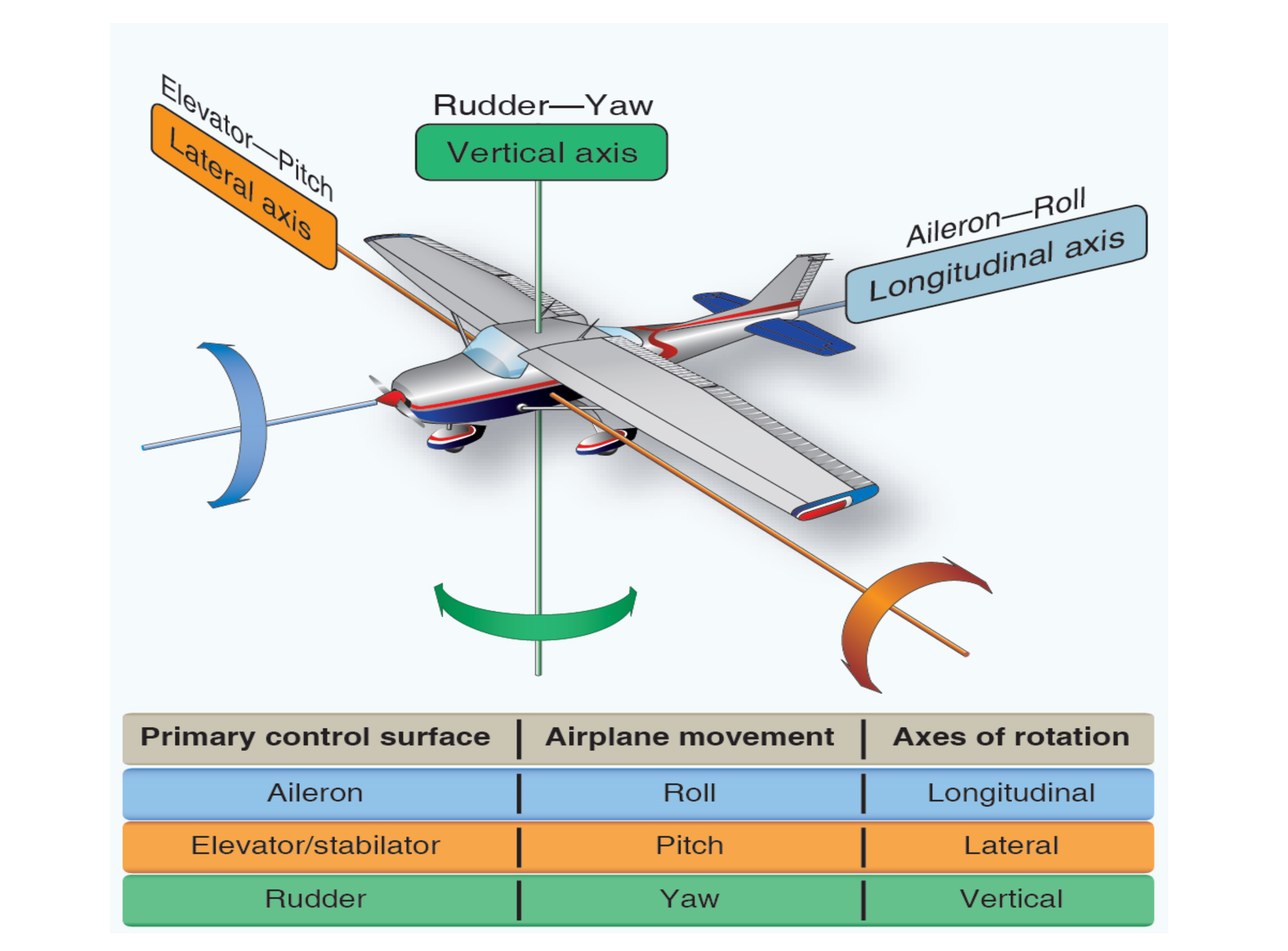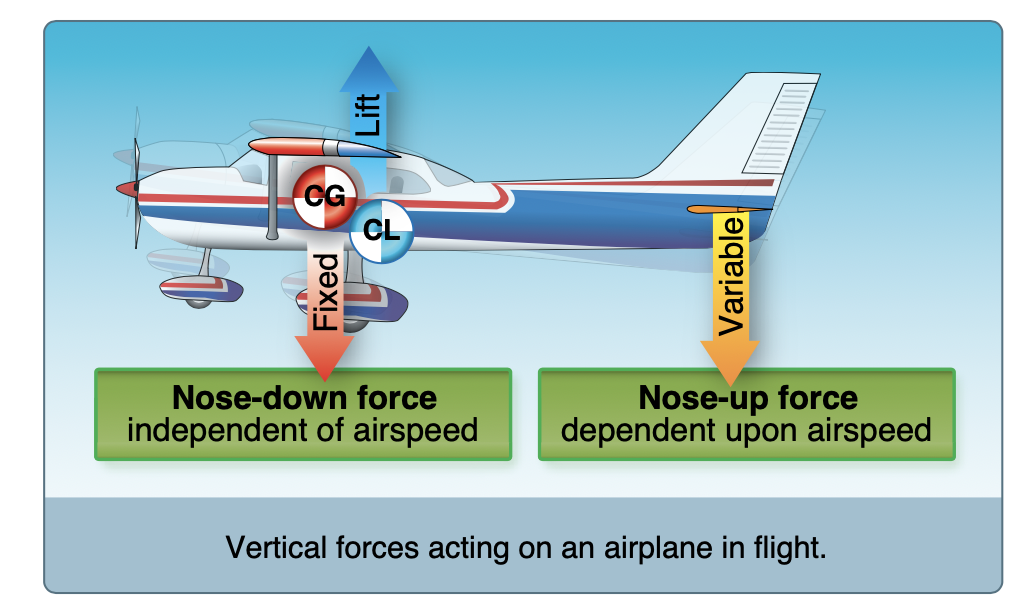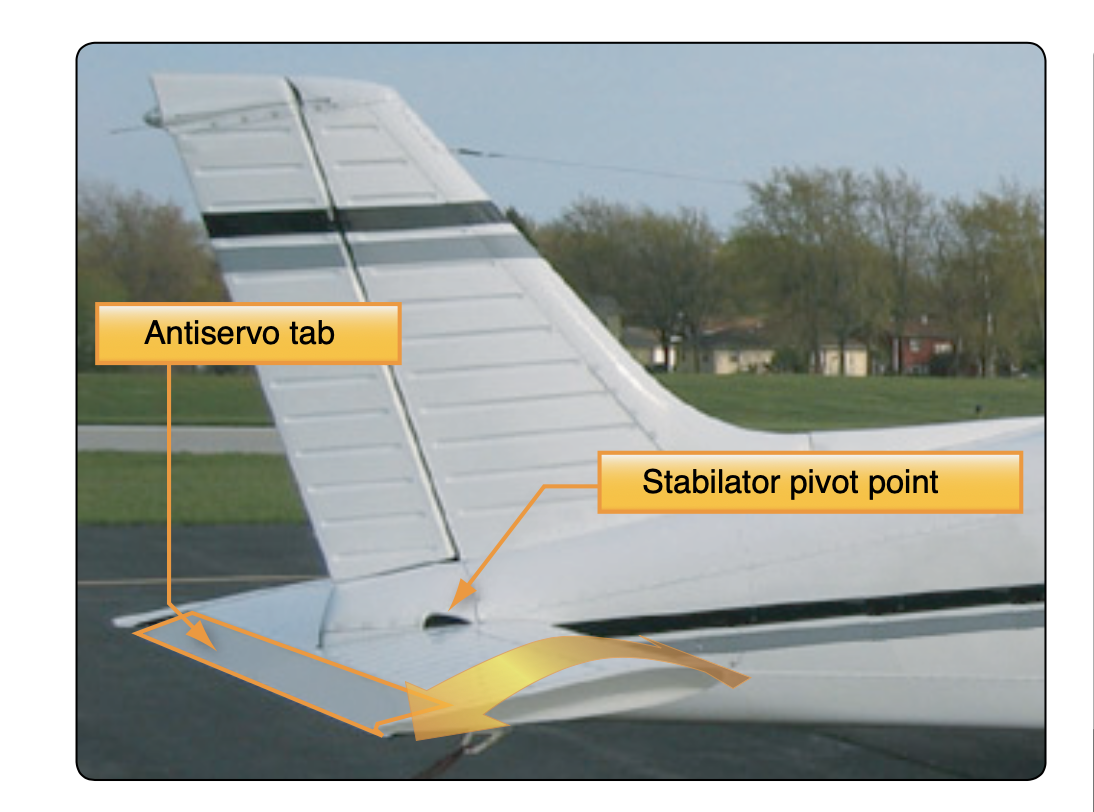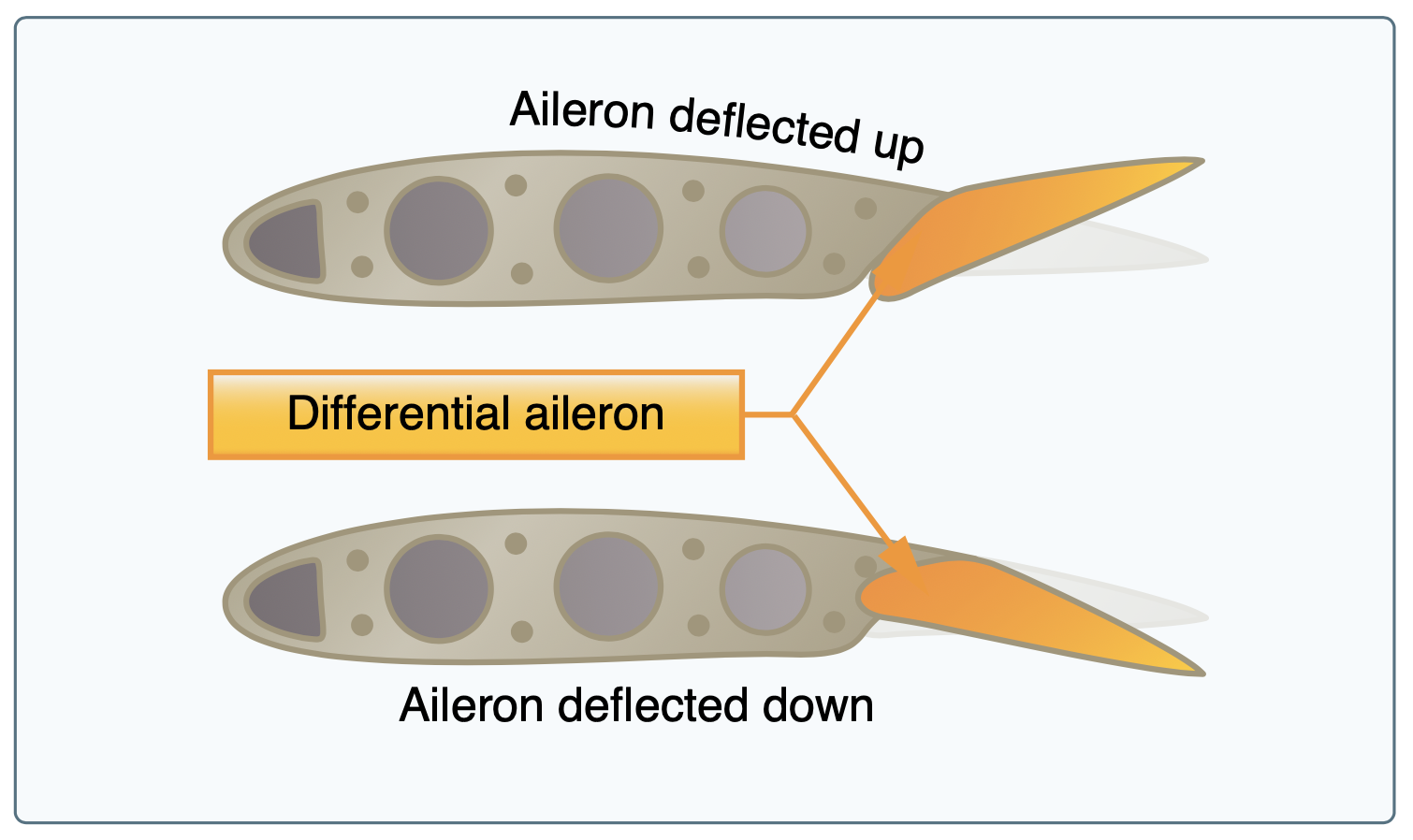Primary Flight Controls
All flight controls work through the center of gravity of the airplane.

Elevator

Controls rotation around the lateral axis, also provide downward pressure to counteract the rotational moment of the main wing.
- The bell crank is a device that translates the forward/back motion of the yoke into the movement of the elevator.
- The down-spring keeps the elevator neutral
T-tails
- Tail mounted on the top of the rudder
- Tail is not out in the prop wash
- Requires more motion of the flight controls since there is no prop air over the control surface
- Risk of a "deep stall" because there's little airflow over the tail
Stabilator

- A "full flying surface"
- Generates a lot of force quickly, more than an elevator
- Easy to over-control since it generates a lot of force
- Anti-servo tab, works against the movement of the elevator to counteract the over-control
Canard
- "Elevator" mounted on the nose of the airplane
- Also not in the prop wash of the airplane
- Provides "nose-up" force
Ailerons
- Controls the roll of the airplane around the longitudinal axis
- Introduces adverse yaw due to induced drag on the upward aileron
- Differential ailerons: The aileron can be lowered farther than it can be raised
- Frise ailerons: A gap between the aileron the wing and aileron surface, helps create more drag when aileron is lifting
- Coupled aileron/rudders: Mechanical linkage between rudder and ailerons, often with strings
- Flaperons: Combination flap/aileron control surface
- Relies on a mixer to combine input

Rudder
Provides yaw, or rotation around the vertical axis.
- Cable-actuated, should hit rudder stops
V-tails
- "Ruddervators"
- Also requires a mixer to mix rudders and elevators